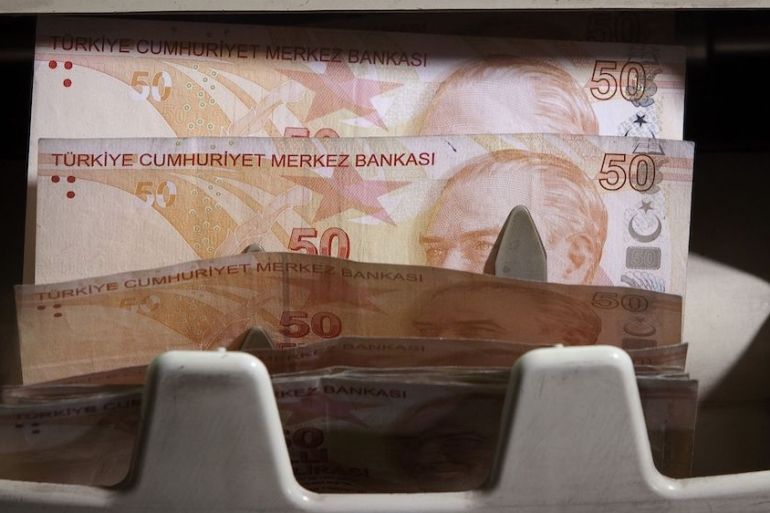Cash crunch sends Turkish lira offshore borrowing rate to 1,000%
The overnight swaps rate was the highest since March 2019.

Interest rates on overnight swaps for Turkey’s lira hit 1,050 percent on Tuesday, the highest in more than a year, in an offshore market that Turkish authorities have starved of liquidity as part of a costly effort to boost the currency.
The rate in the London market was the highest since March 2019, Refinitiv data showed, reflecting what traders and analysts said was a cash crunch and pressure from Ankara.
Keep reading
list of 4 itemsAs US inflation ticks back up, it could impact the presidential election
Will the US unemployment rate continue at historic lows?
The UK’s new minimum wage ‘badly needed’ but many calling for more
The offshore market rate, once widely used for hedging and shorting by overseas investors, stood at 30 percent late last week when the lira touched a record-low spot price against the euro.
One banker said the market for cash in London was “uber tight” after a four-day Turkish holiday weekend, while another said that “rates surge whenever there is some demand” after such a long period of low volumes.
During another lira selloff in March and April last year – when the overnight swap rate hit 1,200 percent – Turkish authorities directed banks to curb trading in the London market.
After an unusually stable two months due in part to costly state interventions, the lira was hit last week by selling and volatility, reflecting concerns over depleted foreign-exchange reserves and Turks buying hard currency.
The offshore market had remained largely dormant until Tuesday when rates spiked, while the underlying lira slipped only 0.4 percent against the United States dollar.
Turkey’s central bank and state banks have spent tens of billions of dollars to stabilise the lira, data and calculations made by traders show. If it cannot rebuild reserves soon, Ankara risks a swollen current account deficit, more lira depreciation, and higher inflation via imports, analysts say.
Central bank governor Murat Uysal repeated last week that reserves naturally fluctuate during times of market stress such as the coronavirus pandemic.
The lira touched a record low against the US dollar in May, and had hovered around 6.85 lira per dollar for two months before weakening briefly beyond 7.0 last week. It was trading at 6.971 at 12:47 GMT on Tuesday.
“A break above seven [liras per dollar] is probably only a matter of time unless the outlook for the Turkish economy improves significantly over the next few months,” said Piotr Matys, senior strategist at Rabobank.
Turkish authorities appeared to be trying to discourage bearish bets by making the London market as expensive as possible, he said, adding: “It is a confirmation of how vulnerable the lira is that they have to reuse such drastic tools.”
Turkey’s main share index BIST 100 fell more than 5 percent during the day and was down 3.53 percent at Tuesday’s close. Turkey’s dollar bonds also fell 1.9 cents.
Jason Tuvey, senior emerging markets strategist at Capital Economics, said the fall in the index was due to investors selling assets to access lira liquidity as well as concerns over policymaking in Turkey.